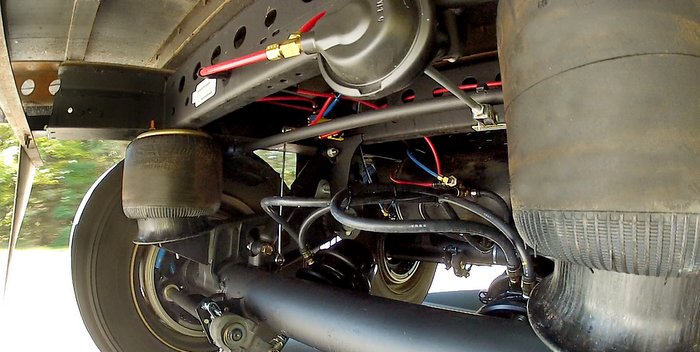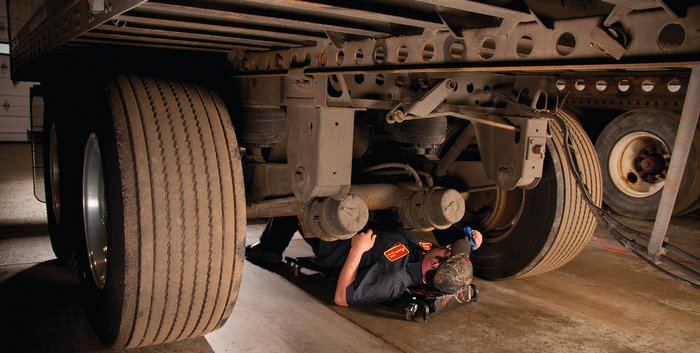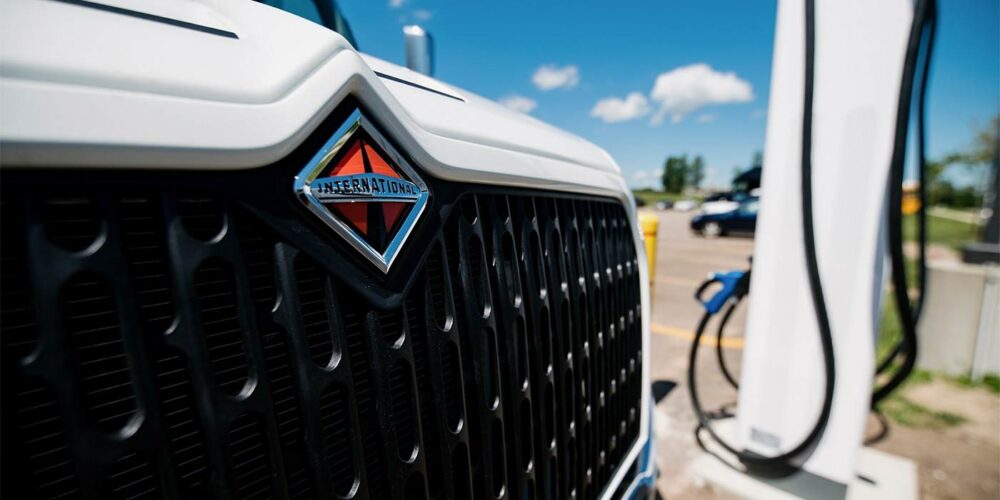Unique qualifications
“Important considerations when spec’ing a suspension system typically include factors such as type of cargo, road conditions, trailer loading percentage, cargo packaging-sensitivity, maintenance cycles and component replacement costs,” SAF-Holland’s Hicks says.
“For truck suspensions, SAF-Holland has focused on vocational applications like heavy haul, dumps and tanks,” Dykstra adds. “We work directly with fleets to specify the best NEWAY suspension for their application, considering factors like road conditions, percentage of off-road activity and maintenance intervals.
“Quality air suspensions,” he continues, “such as SAF-Holland’s trailer air suspensions, offer excellent ride quality, the maximum in cargo protection and are easier on the trailer’s structure and components, but quality suspensions comes with a higher acquisition price, increased weight and greater system complexity.
Dykstra adds that each fleet will need to balance its unique requirements and applications to determine a best fit and if the added cost and complexity is justified.
When it comes to Meritor’s suspension offering, Reineck says that the company’s suspensions are “designed for a full range of vocational applications from flatbeds to tanks to grain haulers, with advanced long-life pivot bushing, unique axle wrap design and high-damping shock absorbers and capacities ranging from 23,000 to 30,000 lbs.
“RideSentry suspensions feature an integrated slider, trailer axles and brakes,” he continues. “The high-strength steel frame provides industry-leading durability and curbing damage resistance. RideSentry suspensions are available for all linehaul trailers.”

Return on investment
“Ultimately, fleets’ return on investment [ROI] can be difficult to quantify as each fleets priorities are different. Some fleets may want to reduce cargo damage while others improve maintenance, ride or handling as an example,” Reineck says.
As with any suspension system, air or spring, the ROI varies for each fleet. According to Hendrickson, “The type of trailer, the selected suspension options, the trailer duty cycle, the operational conditions, and the age of the trailer at trade-in all impact the overall ROI. The company works with fleets on a case-by-case basis to demonstrate how, when taking these variables into consideration, an air suspension can help improve overall operating costs.”
“Fleets will have to consider the higher up-front acquisition cost and increased system complexity and maintenance need,” says SAF-Holland’s Hicks. “These costs, however, can be offset by reduced cargo damage claims, improved overall trailer maintenance, and higher re-sale value.”
Another significant factor to consider when calculating ROI for an air suspension is driver comfort, SAF-Holland’s Dykstra notes, “An air suspension will significantly improve driver comfort and reduce driver fatigue, which can lead to improved retention and reduced lost time injuries.”
Maintenance ensures productive life
“Trailer air suspension systems only require periodic inspections. There are no periodic maintenance requirements. Our inspection recommendations are designed to help detect issues early enough to take action before they become bigger issues,” says Hendrickson’s Rushe.
“Most on-highway suspensions have a minimum of every six months for inspection,” Hendrickson’s Remus says. “Control rod bushings and shocks should be inspected most often followed by air springs, U-bolts/main support member and any frame mounted suspension components. On all air suspensions, checking for proper ride height is important. As well as shock and air spring condition. Most air ride suspensions rely on control rods and/or a main support member [spring] for proper suspension.”
Dykstra notes that SAF-Holland specifies periodic maintenance procedures in its technical literature. “Simply following the guidelines we lay out for periodic inspections is the most important thing a fleet can do. These guidelines specify intervals for the inspection of fasteners, bushings, lubrication, and other major components,” he says.
To help ensure productive life of the systems, Meritor recommends utilizing specific product maintenance manuals that are designed to provide optimum product life, Reineck says. “Fleets should also consider ensuring proper air suspensions ride heights, making sure the correct amount of air is in their air springs, and checking to see that their air springs are free of intrusive debris.”














